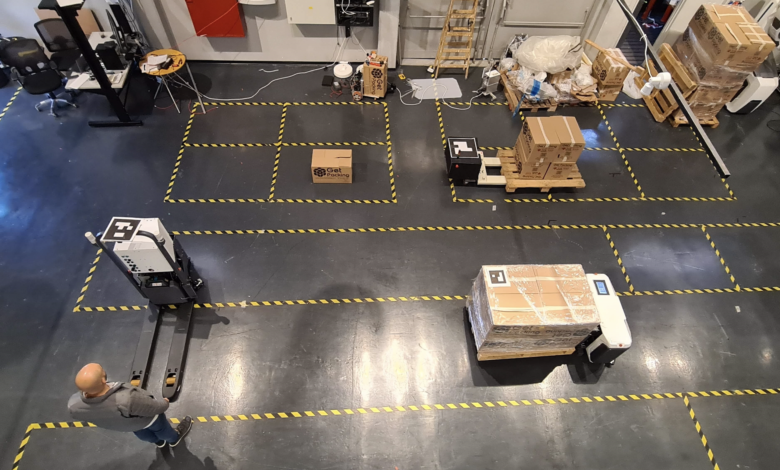
The age-old proverb, “If you want something done right, do it yourself” no longer rings true. Autonomous Mobile Robots (AMRs) are the next evolution in technology which will enable more efficient and safer operations in any number of sectors, including but not limited to industry, hospitality, and medicine. But the practical deployment of AMRs within an indoor space still poses a number of challenges and complications for both the AMR manufacturers and the businesses and organisations using them.
Eyes and Ears of the Machine
One side-effect of the COVID-19 pandemic is that it has made us all aware of where we walk, stand and even sit in relation to one another. In order to social distance effectively, we have needed to limit capacity indoors, or move activities to outdoor spaces. We have engaged our eyes and ears to the best of our ability to protect ourselves and others. AMRs also need to be able to sense and respond to their surroundings to function safely and effectively in an indoor space and perform their task.
Industrial floors, for example, are complex places, and a relatively small area may contain a multitude of processes and people which can be challenging situations for most AMRs. Making accommodations to suit the movement of the AMR, such as clearing the busy work area of obstacles, or moving the whole operation to a larger site, would be nonsensical and expensive. Instead, we need to find solutions to help AMRs become smarter, to see and react better to changes and movements in their environment, so as not to disturb, or worse, cause harms to other occupiers of the operations floor.
The Price of Smart and Safe
Hardware with the level of sophistication required for an AMR to react to its changing surroundings is often extremely expensive, necessitates a herd of engineers and technicians to ensure functionality and maintenance, and is exclusive to the specific manufacturer of the machine. Particularly for smaller businesses, the cost-benefit analysis of advanced AMRs is prohibitive to even the most risk tolerant.
Smart and safe go hand-in-hand, and the same technologies that enable AMRs to react to their surroundings also provide protection for the humans working alongside them. However, there also comes a point where money cannot solve a fundamental flaw of a vehicle that has to see for itself. Even with the most sophisticated and costly components embedded on the vehicle, AMRs cannot see events taking place, or about to take place “around the corner”, as those they are not within their line of sight.
Balancing price, sophistication, and safety is an enormous challenge for the indoor deployment of AMRs. Many of the solutions are complex, from highly functional hardware components to communication through a common API. Instead of simplifying a device whose main goal is to streamline processes, these solutions further complicate the implementation of AMRs, adding to the cost and reducing optimisation.
A View from the Top
Deconstructing the blueprint for AMRs, and applying software innovations, provide a solution to the challenges outlined above. A unified software approach is an inevitable destination for AMR technology. Rather than investing in hardware on the AMR itself that is costly, requires physical maintenance, and is at risk of damage to make AMRs perform with efficiency, why not separate the moving, seeing, and analysing parts of the machine? These devices would no longer need their own eyes and ears. Instead, a central control tower can act as a centralised brain for the operations floor, unifying and conducting a variety of processes, and using data collected from cameras that are attached to the infrastructure of the space, and not the robot. This is what we have done at 634AI. We have developed an inclusive system that is manufacturer-agnostic to oversee the organisation of movement on the industrial floors of a variety of different makes and models of AMRs.
In the long-term, AI software that supports the automation of tasks will allow companies to scale up their operations as their businesses grow, without facing exponential cost increases. Through software solutions, the barriers to entry of automation are lowered, democratising access to AMRs, and allowing them to streamline business processes to support business growth.




